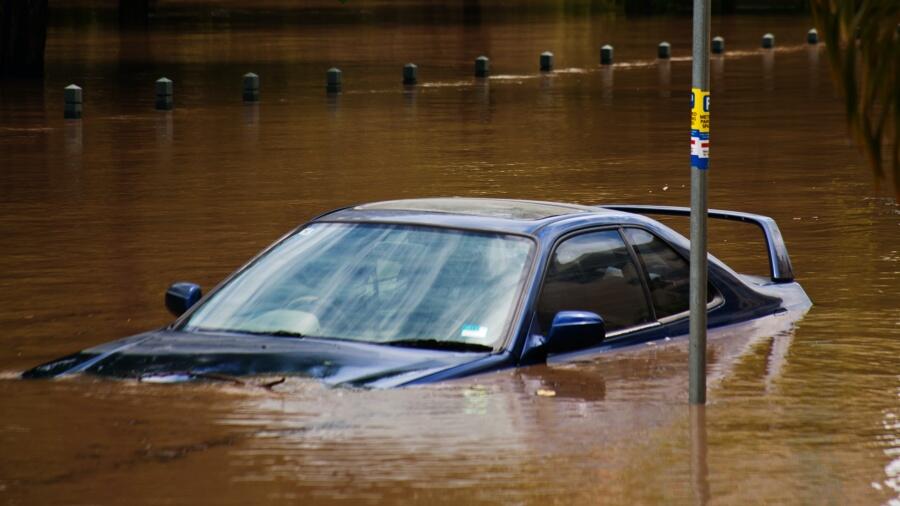Flood Alerts Explained: Protecting Your Home And Family From Flooding

Table of Contents
Understanding Different Types of Flood Alerts
Effective flood preparedness begins with understanding the various flood warning systems in place. Different agencies issue alerts, each with its specific terminology and severity level. The most common source is the National Weather Service (NWS), which utilizes a standardized system to communicate flood risks to the public. Local emergency management agencies also play a vital role, issuing local notifications tailored to specific areas.
-
Flood Watch: A flood watch signifies that conditions are favorable for flooding. This is not an immediate threat, but it's a crucial time to review your flood plan, prepare your home, and monitor weather reports closely. Think of this as a "heads-up" to get ready.
-
Flood Warning: A flood warning indicates that flooding is occurring or is imminent. This is a serious alert demanding immediate action. Evacuation may be necessary. This is not the time to hesitate; your safety is paramount.
-
Flood Advisory: A flood advisory suggests that flooding is possible in specific areas. While not as urgent as a warning, it still warrants attention and caution. Stay informed and be prepared to take action if conditions worsen.
It's crucial to sign up for multiple alert systems for comprehensive coverage. Consider subscribing to weather apps like The Weather Channel or AccuWeather, registering for your local emergency alert system (often through your city or county website), and even following your local news stations on social media for real-time updates. These combined timely flood alerts provide multiple layers of protection.
Preparing Your Home for a Flood
Proactive measures are key to minimizing flood damage. Preparing your home in advance significantly reduces the impact a flood can have. This preparedness includes both securing valuables and developing a comprehensive emergency plan.
-
Elevate Valuable Possessions: Move important documents, electronics, and irreplaceable items to higher levels in your home. Consider water-resistant containers for added protection.
-
Develop a Flood Emergency Plan: This plan should outline evacuation routes, designated meeting points, and communication strategies for your family. Practice your plan regularly to ensure everyone knows what to do in an emergency.
-
Create an Emergency Kit: Assemble a kit with essential supplies including water, non-perishable food, a first-aid kit, flashlights, batteries, medications, and blankets. Remember important documents such as insurance information and identification.
-
Install Flood Barriers or Sandbags: If you live in a flood-prone area, consider installing flood barriers or sandbags around your home's perimeter. These can help to divert floodwaters and protect your property.
-
Know Your Flood Risk: Check flood maps provided by FEMA or your local government to determine your property's flood risk. Review your homeowner's insurance policy to understand your flood coverage. Consider purchasing flood insurance, even if you don't live in a designated high-risk area. Flood insurance can provide critical financial protection during and after a flood. You can find information on obtaining flood insurance through the National Flood Insurance Program (NFIP).
Responding to Flood Alerts: Evacuation and Safety
Your response to a flood alert depends on its severity. Immediate action is crucial when a flood warning is issued.
-
Heed Evacuation Orders Immediately: If an evacuation order is issued, evacuate promptly. Don't wait until the last minute, as conditions can change rapidly.
-
Never Drive Through Flooded Areas: Floodwaters often conceal dangers like hidden debris and washed-out roads. Turn around, don't drown!
-
Turn Off Utilities Before Evacuating (if safe to do so): This helps prevent electrical hazards and further damage to your property.
-
Seek Higher Ground and Stay Away from Floodwaters: Floodwaters can be contaminated and contain dangerous debris. Stay away from power lines and avoid contact with floodwater at all costs.
-
Monitor Weather Reports Continuously: Stay informed about the evolving situation through weather alerts and news reports.
Post-Flood Actions and Recovery
After the floodwaters recede, the recovery process begins. This requires careful action to ensure safety and begin the long process of rebuilding.
-
Contact Your Insurance Company to File a Claim: Document all damages with photos and videos. Keep detailed records of your losses.
-
Document Damages with Photos and Videos: This documentation is vital for your insurance claim. Take clear pictures and videos of the damage to your property.
-
Avoid Entering Flood-Damaged Areas Until They're Deemed Safe by Authorities: Floodwaters can leave behind significant hazards, including structural damage and contaminated water.
-
Clean and Disinfect Your Home Properly to Prevent Mold Growth: Thorough cleaning and disinfecting are crucial to prevent mold growth, a significant health hazard.
-
Seek Help from Local and Federal Agencies Offering Disaster Assistance: Various agencies like FEMA (Federal Emergency Management Agency) and the Small Business Administration (SBA) offer disaster relief assistance.
Conclusion
Understanding and effectively responding to flood alerts is paramount to protecting your home and family. Remember the key takeaways: prepare proactively, understand the different alert levels (flood watch, flood warning, flood advisory), and know the steps to take during and after a flood. By developing a comprehensive flood preparedness plan, registering for reliable flood alerts from multiple sources, and staying informed, you can significantly reduce your vulnerability to the devastating effects of flooding. Don't wait until it's too late; create your flood preparedness plan today and safeguard your future. Register for flood warning systems in your area and stay informed about local weather conditions and potential flood threats. Protecting your family is paramount; prioritize preparedness and ensure you have a plan in place for reliable flood alerts.

Featured Posts
-
 Gauff Defeats Zheng In Italian Open Semifinal
May 25, 2025
Gauff Defeats Zheng In Italian Open Semifinal
May 25, 2025 -
 Urgent Flash Flood Warning Issued For Parts Of North Central Texas
May 25, 2025
Urgent Flash Flood Warning Issued For Parts Of North Central Texas
May 25, 2025 -
 Jenson And The Fw 22 Extended Collection New Styles And Details
May 25, 2025
Jenson And The Fw 22 Extended Collection New Styles And Details
May 25, 2025 -
 Ferraris Inaugural Bengaluru Service Centre What To Expect
May 25, 2025
Ferraris Inaugural Bengaluru Service Centre What To Expect
May 25, 2025 -
 Dutch Equities Fall As Us Trade War Intensifies
May 25, 2025
Dutch Equities Fall As Us Trade War Intensifies
May 25, 2025
